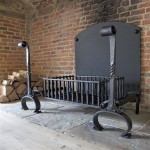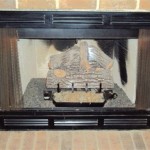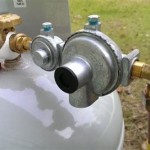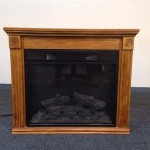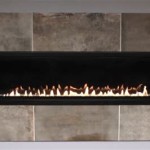Removing Soot from Brick Fireplaces: A Comprehensive Guide
Brick fireplaces, while aesthetically pleasing and providing a comforting ambiance, are prone to accumulating soot. Soot, a byproduct of incomplete combustion, is composed of fine particles primarily consisting of carbon. Its accumulation detracts from the fireplace's appearance and can pose health and safety risks. This article provides a detailed guide on effectively removing soot from brick fireplaces, covering preparation, cleaning methods, and preventative measures.
Understanding Soot and its Impact
Soot is more than just a visual nuisance. Its accumulation can contribute to respiratory problems, especially for individuals with pre-existing conditions such as asthma or allergies. Soot particles can become airborne and inhaled, irritating the lungs and exacerbating respiratory issues. Furthermore, excessive soot build-up in the chimney can increase the risk of chimney fires. Soot is combustible and can ignite if exposed to high temperatures, potentially leading to a dangerous and damaging fire. Regular cleaning and soot removal are therefore crucial for maintaining a safe and healthy living environment.
The composition of soot can vary depending on the fuel source burned in the fireplace. Wood fires tend to produce more soot than natural gas or propane fires. The type of wood also influences soot production; softwoods like pine contain more resins and oils that contribute to soot build-up compared to hardwoods like oak or maple. Creosote, a tar-like substance also produced by wood combustion, often accompanies soot and can be particularly difficult to remove.
Soot is also porous, which means it readily absorbs moisture. This can lead to staining of the brick, especially if the soot is not cleaned promptly. The absorbed moisture can also contribute to the growth of mold and mildew, further damaging the brick and creating additional health hazards.
Preparing for Soot Removal
Before commencing the cleaning process, proper preparation is essential to protect yourself and your surroundings. Gather the necessary tools and materials. These may include:
*Personal Protective Equipment (PPE):
Safety glasses, a dust mask or respirator, and gloves are crucial to protect your eyes, lungs, and skin from soot particles. *Drop Cloths or Plastic Sheeting:
Cover the area surrounding the fireplace to protect flooring, furniture, and other surfaces from soot and cleaning solutions. *Vacuum Cleaner with a HEPA Filter:
A vacuum cleaner equipped with a HEPA filter is vital for removing loose soot and debris without dispersing it into the air. A regular vacuum cleaner will simply spread the fine particles. *Stiff-Bristled Brush:
A scrub brush with stiff bristles is necessary for agitating and loosening soot from the brick surface. An old toothbrush can be useful for cleaning grout lines. *Cleaning Solutions:
Several options are available, including commercial fireplace cleaners, trisodium phosphate (TSP) solutions (handle with extreme caution), and homemade mixtures of dish soap and water. Start with the gentlest option first. *Sponges and Rags:
Use sponges and rags to apply cleaning solutions and wipe away soot and residue. *Spray Bottle:
A spray bottle is helpful for applying cleaning solutions evenly to the brick surface. *Bucket:
A bucket is needed to mix cleaning solutions. *Ladder or Step Stool:
If the fireplace extends high up the wall, a ladder or step stool may be necessary to reach all areas.Once you have gathered the necessary supplies, thoroughly inspect the fireplace for any structural damage, such as cracks or loose bricks. If any damage is present, address it before attempting to clean the soot, as cleaning can exacerbate existing problems. Ensure adequate ventilation by opening windows and doors, as soot can be irritating to the respiratory system.
Effective Soot Removal Methods
Several methods can be employed to remove soot from brick fireplaces. The selection of the appropriate method depends on the severity of the soot accumulation and the type of brick.
*Vacuuming:
Begin by thoroughly vacuuming the fireplace interior and exterior with a HEPA-filtered vacuum cleaner. This will remove loose soot and debris, preventing it from spreading during the cleaning process. Use a brush attachment to reach into crevices and grout lines. Pay particular attention to the firebox, the area directly exposed to the flames, as this is where soot accumulation is typically the heaviest. *Dry Cleaning with a Brush:
For lightly soiled brick, dry cleaning with a stiff-bristled brush may be sufficient. Scrub the brick surface in a circular motion to loosen the soot. Vacuum up the dislodged soot as you go. This method is particularly useful for delicate brick surfaces that may be damaged by harsh chemicals or excessive moisture. *Dish Soap and Water:
A mild solution of dish soap and water can be effective for removing moderate soot accumulation. Mix a few drops of dish soap in a bucket of warm water. Dip a sponge or rag into the solution and wring out the excess water. Gently scrub the brick surface, working in small sections. Rinse the cleaned area with clean water and dry with a clean cloth. Avoid using excessive water, as this can saturate the brick and lead to staining. *Commercial Fireplace Cleaners:
Numerous commercial fireplace cleaners are available specifically formulated for removing soot. Follow the manufacturer's instructions carefully, as these cleaners may contain strong chemicals. Test the cleaner on an inconspicuous area of the brick first to ensure it does not damage the surface. Apply the cleaner to the brick surface, allow it to dwell for the recommended time, and then scrub with a stiff-bristled brush. Rinse thoroughly with clean water and dry with a clean cloth. *Trisodium Phosphate (TSP):
TSP is a powerful cleaning agent that can effectively remove stubborn soot and grease. However, it is also highly alkaline and can be harmful if not handled properly. Wear gloves and eye protection when using TSP. Mix TSP powder with water according to the manufacturer's instructions. Apply the solution to the brick surface and scrub with a stiff-bristled brush. Rinse thoroughly with clean water and neutralize the surface with a solution of vinegar and water (1 part vinegar to 10 parts water). Rinse again with clean water and dry with a clean cloth. Dispose of the TSP solution properly according to local regulations. *Baking Soda Paste:
For localized soot stains, a paste made from baking soda and water can be effective. Mix baking soda with water to create a thick paste. Apply the paste to the stained area and allow it to dry completely. Scrub the dried paste with a stiff-bristled brush and rinse with clean water. This method is gentle and non-abrasive, making it suitable for delicate brick surfaces. *Pressure Washing:
While effective for removing soot, pressure washing should be approached with caution as it can damage the brick if not done correctly. Use a low-pressure setting and a wide fan nozzle. Test the pressure washer on an inconspicuous area of the brick first to ensure it does not cause erosion or chipping. Avoid directing the water stream at grout lines, as this can damage the mortar. After pressure washing, allow the brick to dry completely before sealing or painting.For particularly stubborn soot stains, several applications of the chosen cleaning method may be necessary. Be patient and persistent, and avoid using abrasive cleaners or tools that could damage the brick surface. Remember to always rinse thoroughly with clean water after each cleaning application to remove any residual cleaning solution.
Preventative Measures to Minimize Soot Accumulation
Preventing soot accumulation is always preferable to having to remove it. Several measures can be taken to minimize soot build-up in your brick fireplace.
*Burn Seasoned Firewood:
Burning firewood that is properly seasoned (dried for at least six months) is crucial for reducing soot production. Seasoned firewood burns more efficiently and produces less smoke and creosote compared to green or wet wood. Ensure the firewood has a moisture content of less than 20% before burning it. Using a wood moisture meter can help determine the moisture content of your firewood. *Ensure Proper Airflow:
Adequate airflow is essential for complete combustion. Make sure the damper is fully open when burning a fire. Avoid overloading the fireplace with wood, as this can restrict airflow and lead to incomplete combustion. Consider using a grate to elevate the firewood and improve airflow around the logs. *Regular Chimney Sweeping:
Schedule regular chimney sweeps to remove soot and creosote build-up in the chimney. The National Fire Protection Association (NFPA) recommends having your chimney inspected and cleaned at least once a year, or more frequently if you burn wood frequently. A professional chimney sweep can also identify and address any potential safety hazards, such as cracks or blockages in the chimney. *Use a Fireplace Insert:
A fireplace insert is a closed combustion appliance that is installed inside an existing fireplace. Fireplace inserts burn fuel more efficiently and produce less smoke and soot compared to open fireplaces. They also provide greater control over airflow and heat output. *Consider Alternative Fuel Sources:
If possible, consider using alternative fuel sources such as natural gas or propane. These fuels burn cleaner than wood and produce significantly less soot and creosote. Gas fireplace inserts and logs are available that can mimic the look and feel of a wood-burning fire.By implementing these preventative measures, homeowners can significantly reduce soot accumulation and maintain the beauty and safety of their brick fireplaces for years to come. Regular maintenance, combined with proper burning practices, will minimize the need for extensive cleaning and prolong the lifespan of the fireplace.

Remove Soot From Fireplace Tips For Cleaning Chimney

How To Clean Soot Off Brick Fireplaces Anew

How Fo I Remove Fireplace Soot Smoke Hometalk

4 Ways To Clean Soot From Brick Wikihow

4 Ways To Clean Soot From Brick Wikihow

How To Clean Soot From Brick

4 Ways To Clean Soot From Brick Wikihow

Clean Soot Fireplace From Stone Furnace Oil Leaks Diesel Spills Gas Remediation

How To Clean Fireplace Bricks Simple Practical Beautiful

4 Ways To Clean Soot From Brick Wikihow

